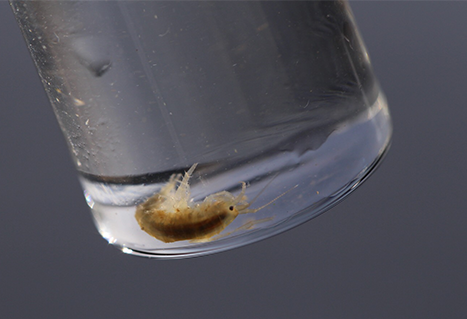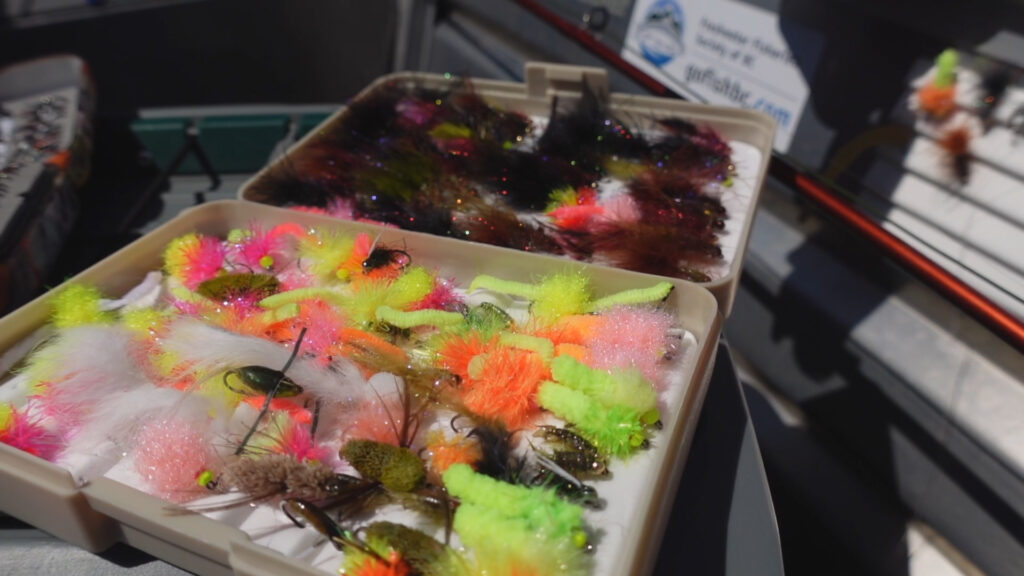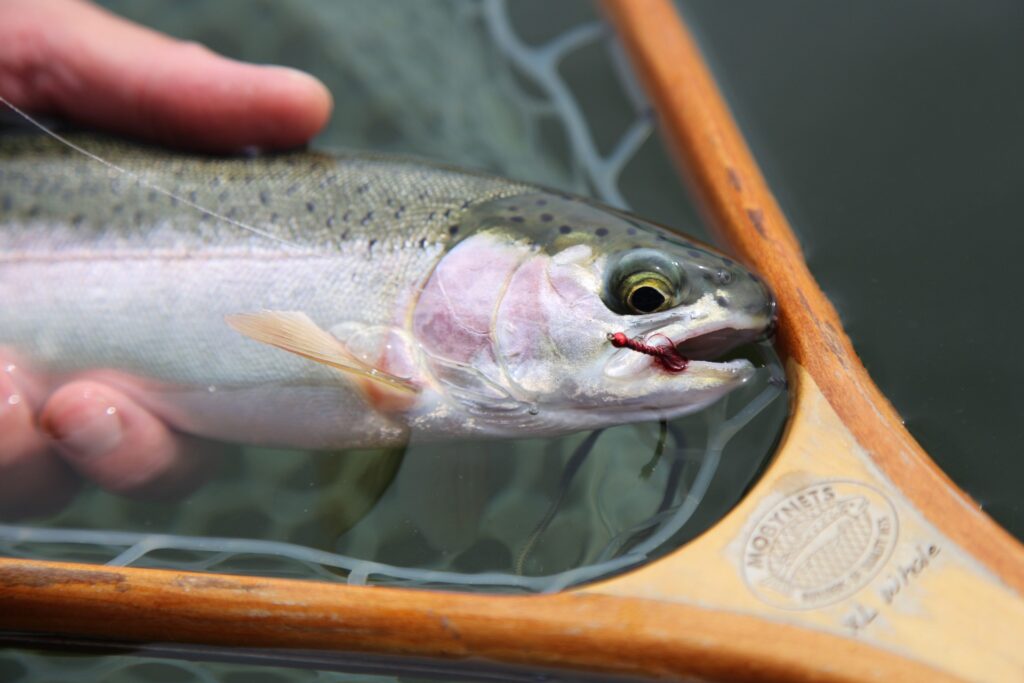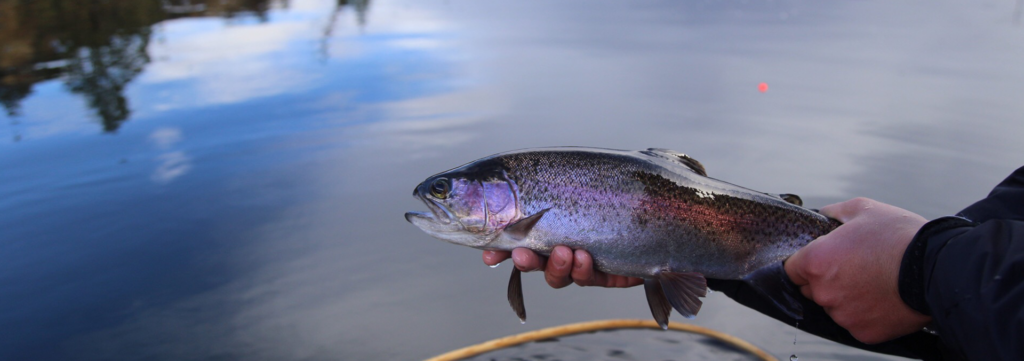There are few things that excite stillwater anglers more than dialling in a hatch and watching the indicator submerge repeatedly. But how do we deal with fish that are playing “hard-to-get”? A durable angler has the ability to thrive under difficult conditions. Since we never know when these days are going to happen, be prepared for them by remembering the following three techniques that will increase your confidence while adding a few new tools to your repertoire.
1. Shallow Water Shrimping
Imitating scuds (freshwater shrimp) in shallow water is an often overlooked method. It can yield results when fish are revealing themselves, but refusing to take your fly. Two primary methods for imitating shrimp are suspending them beneath a strike indicator, or stripping them in on a sinking line. Suspending them merely involves pegging your indicator so that your fly will hang straight down, 30 to 100 centimetres (one to three feet) off a lake’s bottom. Ideally your indicator should drift about naturally with whatever breeze or ripple is present. The second method involves casting out a slow sinking line (with a one to three inches-per-second sink rate), followed by a steady retrieve of short strips that are less than 2.5 centimetres (one inch) in length.

2. The Force Feed
There are days when fish are simply not keyed in to any particular food source. If a hatch is not present, they might be eating only the occasional leech, bloodworm, or shrimp, and it can prove difficult to attract them. Knowing how to elicit a reactive bite – one which goads a fish to strike out of curiosity or aggression – is a vital tool to have. Use this technique with brighter, more unconventional flies like blob or booby patterns fished behind sinking lines. To reduce any chance of deep-hooking a fish, remember to keep these flies moving quickly.

3. Fishing “The Basement”
When rainbow trout are being overly tight-lipped, they are often found sulking fairly close to the bottom. Knowing how to target fish that are hanging close to the mud or marl will dramatically increase your chances of fooling them. This method is often done best using small leech or bloodworm imitations. Peg your strike indicator to allow your fly to hang at a depth within 60 centimetres (two feet) or less from a lake’s bottom. Do this by either clipping a small weight onto the fly to measure your depth (preferred method), or measuring your arm spans.

When faced with adverse fishing conditions, these three techniques have saved more than a few days from being a complete bust.
Author: Jordan Oelrich
Images: Jordan Oelrich
Jordan Oelrich is the owner of Interior Fly Fishing Co. When he’s not guiding, Jordan shares his knowledge for fishing as a writer and fly-tying instructor.
Follow Jordan on Instagram or visit his website.
